More often than not, authors make the imagined compatible with the real. The world around us continues to exist while we read, even if we believe everything the author tells us. In A History of What Comes Next, the Kibsu insert themselves into history in their bid to take us to the stars, but the resulting timeline is the one we know. There are few, if any, verifiable facts that would contradict the storyline and, conversely, nothing in our present would change if it all happened to be true. There are those, however, who aren’t so kind to our reality, authors whose stories mess with past events and take a wrecking ball to our timeline.
The most inspiring and tragic events in history make good candidates for alternate or secret histories and both are often intertwined. The space race and the Second World War, for example, are inexorably linked, and alternate or secret histories of one will often involve the other. It is, of course, almost impossible to talk about alternate histories of World War II without mentioning The Man in the High Castle by Philip K. Dick. Since it will be on just about every list of this sort, I chose not to include it.
Without further ado, here are some of my favorite reimaginings of the War and the Space Race that followed.
The Calculating Stars by Mary Robinette Kowal
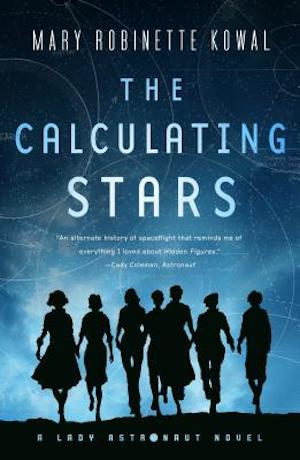
So much for avoiding the obvious. The Calculating Stars is an instant classic and absolutely everyone should read it. A meteorite hits Earth in 1952 and the resulting global warming menaces all life on the planet. While an international coalition speeds up the space program in the hopes of saving humanity, an incredibly smart human computer persists in her attempts at joining a mission to the moon despite rampant sexism. Mary Robinette Kowal captures the spirit of the era with finesse and the main character is an absolute gem. It’s no surprise the book won the Hugo, the Nebula and the Locus Awards. If you know anything about the history of women pilots, the Ninety-Nines, or the First Lady Astronaut Trainees (aka Mercury Thirteen), you’ll absolutely love this, and if not, this is a wonderful introduction to the subject. Bonus: It’s the first of the Lady Astronaut series. Two more novels: The Fated Sky and The Relentless Moon are available now. There are also two novelettes in the same universe.
The Oppenheimer Alternative by Robert J. Sawyer
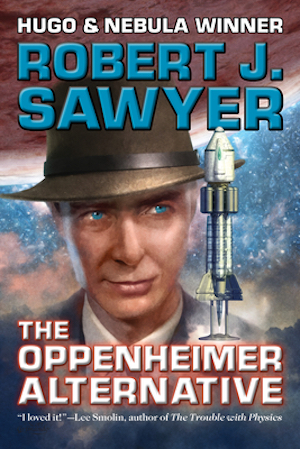
All life on Earth is a few decades away from being scorched into oblivion (of course it is) and the world’s greatest minds band together to stop it. You know many of them. There’s the titular J. Robert Oppenheimer, obviously, but also Albert Enstein, Leo Szilard, Niels Bohr, Edward Teller, Wernher von Braun, Richard Feynman, Arthur Compton, Enrico Fermi, etc., etc. Every single character in this book is a real person. That’s right, all of them. Even some of the dialogue is real. This is one of the most ambitious books I’ve come across. I can’t imagine the amount of research that went into giving each character a believable voice and personality (actually, I can, the bibliography runs 30 pages on my phone), but this is Robert J. Sawyer so maybe I shouldn’t be surprised. In some ways, it reminded me of the play Copenhagen by Michael Frayn, with more thrills, cool rockets and a doomsday scenario to boot.
Farthing by Jo Walton
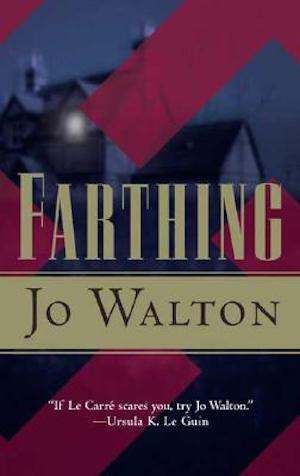
This is, on appearance, a typical murder mystery set in 1949’s England, but this is not our England. This one sold its soul to put an end to the hostilities with Hitler. It’s an England rotting at its core where antisemitism runs free. When a politician turns up dead at the famous Farthing estate, the prime suspect is naturally the Jewish husband of the main protagonist, which may be the reason he was invited in the first place. It’s up to inspector Carmichael from Scotland Yard to solve the mystery. The book is a brilliant take on fascism and a great whodunnit. It’s quite dark, as you might have guessed, but the alt-history part is introduced rather subtly. Farthing, the house, feels like a creepy Downton Abbey/Knives Out mansion and the characters are wonderful. Though the story takes place more than seventy years ago, the subject matter, and the plot, are disturbingly apropos. Farthing was nominated for the Nebula and the Campbell Memorial Award. Bonus: This is the first of a trilogy. The other two novels, Ha’penny and Half a Crown, are both out.
United States of Japan by Peter Tieryas
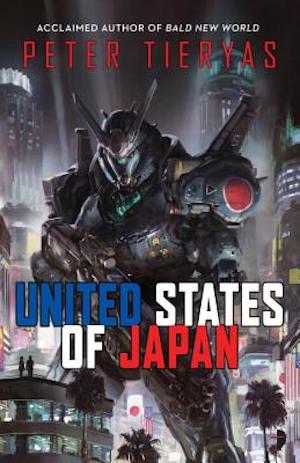
OK, so I didn’t put The Man in the High Castle on the list but this one is heavily inspired by it. You can guess from the title who won the War. The story follows a video game censor and an Imperial Government agent who investigates a subversive game showing a world where the Allies were victorious. It’s an engaging reflection on oppression, patriotism and nationalism, a thrilling detective story with some kick-ass action and a slick cyberpunk atmosphere. There’s a bit of an anime feel to it, halfway between the real and imaginary. And yes, there are some giant mechs in there. It’s not a retelling of the war itself, but come on, alternate history WITH giant robots. What more do you want from life? Bonus: There are two more stand-alone novels in the same universe: Mecha Samurai Empire (TONS of giant robots) and Cyber Shogun Revolution. On a side note, the food in those books sounds absolutely amazing. I’m hungry just thinking about it.
Ascent by Jed Mercurio / Ascent by Jed Mercurio and Wesley Robins
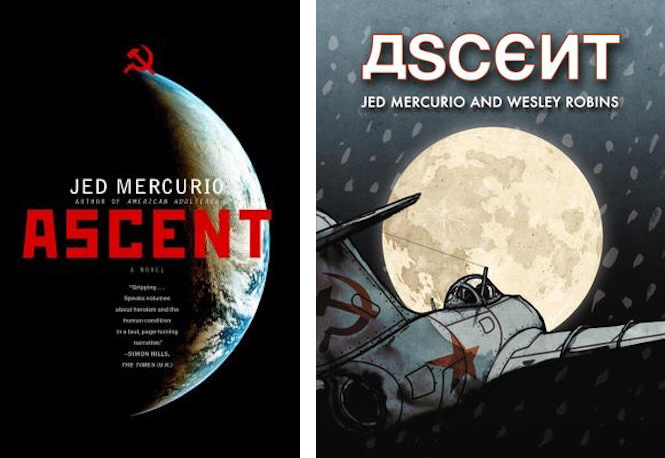
What if the Soviets put the first man on the Moon and we just never heard about it? This is the story of Yefgenii Yeremin, a Stalingrad orphan who becomes an ace pilot in the Korean war before being court-martialed and sent into exile. He’ll come back for a daring, if ill-conceived mission to get to the Moon before the Americans plant their flag. Ascent is both a novel and a graphic novel, the latter based on the former. I went for the graphic novel. The aerial scenes are particularly vivid. The art by Robins is gorgeous and haunting, the mood expertly set with sharp lines and an exquisitely bleak palette. And bleak it is, Yefgenii’s life is tragic, from his time at the orphanage to his final mission. I’m not always a fan of graphic novels but I absolutely adored this book.
Buy the Book


Until the Last of Me
Originally published in January 2021
Sylvain Neuvel dropped out of high school at age 15. Along the way, he has been a journalist, worked in soil decontamination, sold ice cream in California, and taught linguistics in India. He’s also a certified translator, though he wishes he were an astronaut. He writes about aliens and giant robots as a blatant excuse to build action figures (for his son, of course).










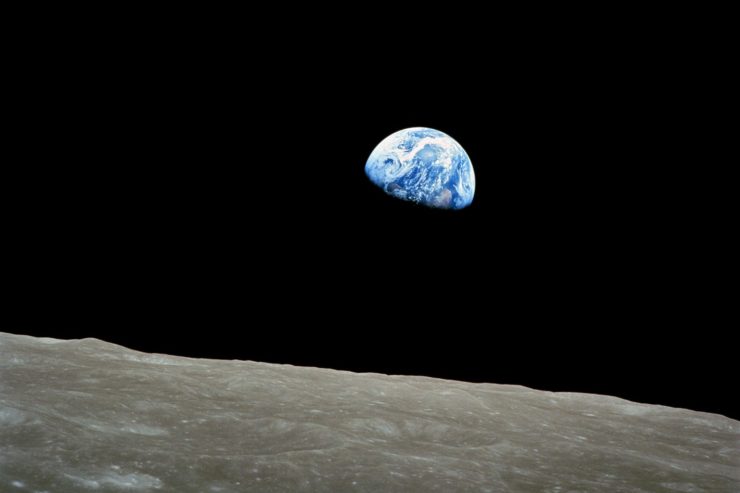
Thanks for the recommendations! I had never heard of it, but Farthing sounds right up my alley with a mix of murder mystery and alternative history.
Dang it, time to spend a few more quid.
I found the first two books of Walton’s Small Change trilogy great. A reflection on cultural values, personal courage, and the thin line between pragmatism and collaboration. The third book had all that, but also an ending that I won’t spoiler here. Suffice to say, I think it should have been darker …
Most of the fiction I enjoyed about early days of the space program has become alternate history.
Part of the concept behind Stirling’s The Sky People and In the Courts of the Crimson Kings is, “What if the Cold War space race proceeded as in our history, but Venus and Mars resembled the planetary romances of Burroughs et al.?” Part of the answer is, “Our spy games with the Chinese are complicated by the politics of a much, much older civilization.”
A small but central part of Terminal Freedom is based on the idea that all those rocket scientist Nazis the USA recruited after WW2 were in a secret base in the desert … and left for Venus without telling the USA that’s what they were doing. (Not quite alternate WW2 but alternate aftermath to WW2.)
The book itself is a wacky ode to Los Angeles by Daniel Keys Moran and Jodi Moran, with memorable characters (with names like Terminal Sue, Bogie Freedom, Dreadful Sam, Blue Hair, and Doctor Death) doing outrageous things. But watch out for those space Nazis.
@3: ISTM the first two were dark enough; there’d be no point to the third if it didn’t let some light in. (And I doubt Walton was willing to write an all-dark set.)
Addition: Greg Benford, The Berlin Project. The US picks the faster way to enrich uranium (centrifuges instead of diffusion) and has enough material early enough to affect the European front — which of course cascades. I had a lot of bones to pick with this book, from copyediting on up, and I don’t believe the long-term consequences Benford sees, but it’s an interesting idea.
@3,
I barely survived the series as it was- I couldn’t have handled “much darker.”
What happened in the third book was based on how fascism ended in Spain, history’s one example of fascism ending from within, not by violent overthrow from without.
I continue to find it fascinating how so many people prefer negative things to positive ones, at least in fiction.
Allen Steele (Hugo, Locus) should get a mention; he went down this path in the 1990s and did it well.
The Tranquillity Alternative, and some short stories that were connected, are enjoyable reads that don’t require earth shattering kabooms to set their events in motion; basically, Robert Goddard is somewhat healthier than in reality and the Allied/Nazi Germany war time technical competition is based on an a-historical sub-orbital spaceflight “race”, rather than atomic weapons/V-weapons situation.
The technology is beyond the state of the art in the 1940s, but they are entertaining.
I was less embarrassed by not knowing about the Sawyer when I saw that it only came out last year. The only book of his that I’ve read is Calculating God, but I really enjoyed it. The storiy told in Oppenheimer sounds unmissable. I already ordered it.
What about Harry Turtledove’s Worldwar: In the Balance? Where reptilian aliens attempt to conquer the Earth during WWII and have an extremely hard time doing so.
@9, I agree with you. It’s almost like people are disappointed the allies won!
@9, @13, it was a bit of a feeling that it shouldn’t have been that easy. When Fascism ended in Spain, it was one of the last holdouts and the EC/EU was on the rise. Easier to end it then.
Robert Conroy wrote a slew of alternate versions of American history. Many of them set in WWII.
Some involve the Pacific war.
In 1942, after bombing Pearl Harbor, Japan invades the Hawaiian Islands.
In Rising Sun, Japan won the Battle of Midway. And invades Hawaii.
In 1945, after we bombed Hiroshima and Nagasaki, Japan refuses to surrender.
Some feature the European front.
In Himmler’s War, Hitler dies in an air strike and Himmler seizes control of Germany.
In Germanica, Goebbels builds ramparts in the Alps. From which he can continue the war.
In Red Inferno, Stalin doesn’t stop in Germany. He attempts to conquer all of Europe.
To me the Walton’s books stood out also because they were very well written, quite above the usual AH level.
I will mention also the comics Ministry of Space from 2001-2004 by Warren Ellis and Chris Weston. In that AH the British empire rules the Solar system and the push to space is funded by the money, possibly also art, that the UK expropriated from the Nazi who stole them from the wealthy Jews. However, this alternate UK is not quite the paradise that one would expect, with institutionalized segregation, much like in SA before Mandella and the ANC came to power. In my view the art could be a bit better, but I liked the idea very much – it is a statement against the somewhat popular “space at any cost” idea.
In the mid-1980’s, I read The Burning Mountain by Alfred Coppel. In this novel the Trinity test is a failure and the allies invade Japan. The Burning Mountain introduced me to Operation Downfall (a proposed Allie plan to invade Japan). IIRC it was well researched and written.
I’ve read MRK’s The Calculating Stars and The Fated Sky and enjoyed them both. The Relentless Moon is on my TBR pile.
The difficulty I have with them is people in the 1950s and 60s didn’t know just how unsuitable for human inhabitation Mars is. IRL Mars is a poisonous, radioactive hellscape. An earth that is boiling is still a better place for human life than Mars ever could be.
Memory dredges up a couple of much older shorter works: “The Sound of His Horn” (long enough that it originally came out as its own book) and “The Fall of Frenchy Steiner” both involve a victorious Germany reverting to previous centuries’ attitudes, exaggerated.
@14: OTOH, Spain had had a few decades to get used to its brand of fascism; at the end of the Small Change trilogy it’s been only about a dozen years, so there were more people who remember what life was like before fascism and want to restore it. I suspect that the English monarchy was also more respected at the time than the Spanish monarchy was in the later 20th century, such that a young Elizabeth II would have had more leverage. There’s also the fact that power in Small Change was seized by fraud at least as much as outright force; exposing the fraud undercut the seizure.
#10: the only thing that I remember about that Steele book is that he had Star Trek running in the 1950s instead of 1960s…but still had Shatner and Nimoy etc in the same roles. But those actors were in their early 20s then, and would never have been considered for the roles of a starship captain and first officer.
Very glad that the Coyote series was far better!
17) Coppel is far more realistic than Conroy; “Axis victory in WW II” is fantasy, not even alternate history (much less a thoughtful examination of historical alternatives);
20) Don’t recall that at all, but if that’s the worst element, that’s a lot better than 90% of alternate history, which thoroughly embodies Sturgeon’s Law.
See also “The Ministry of Space”(2006) by Warren Ellis, in which Great Britain, not the US or USSR, nabs most of the German rocket scientists after WWII and becomes the preeminent power in space exploration.
22, meet 16… ;)
Haven’t read Ellis, but given the challenges of the post-war UK economy (there’s a reason the British and French backed down at Suez in 1956, and it was not the Egyptian military), and the simple reality the US military was looking for a reconnaissance capability over Eurasia that could not be intercepted as early as December, 1945, when both the USN and USAAF published reports on the concept, and both branches were engaged in rocketry research, using both solid and liquid-fueled designs, as early as 1939. The lead author of the 1945 USAAF report was Theodore von Karman, who was, to make clear, very MUCH not a PAPERCLIP asset.
@23
Actually, how Britain’s space programme is financed is part of the plot of The Ministry of Space:) The story is, I suspect, also an Watchmen-esque look at how a Dan Dare-type world might realistically come about.
Given the cost of Apollo at the time was ~$28 billion ($280 billion today adjusted for inflation) that seems like a lot of “Nazi Gold” … considering that 1997 dollar value of the gold recovered by the Allies and then distributed by the Tripartite Commission was $5.6 billion, the Royal Space Force would have been bankrupted – and in the red by more than $3 billion – by the equivalent of projects Mercury and Gemini. See:
https://fcit.usf.edu/holocaust/resource/gold/gold.pdf
and
https://www.planetary.org/space-policy/cost-of-apollo
and
https://www.thespacereview.com/article/1579/1